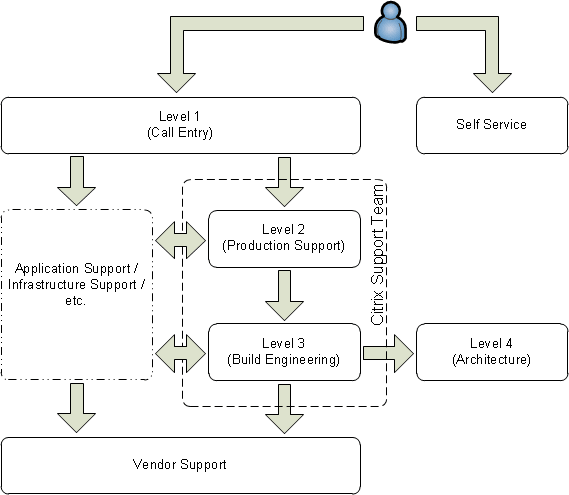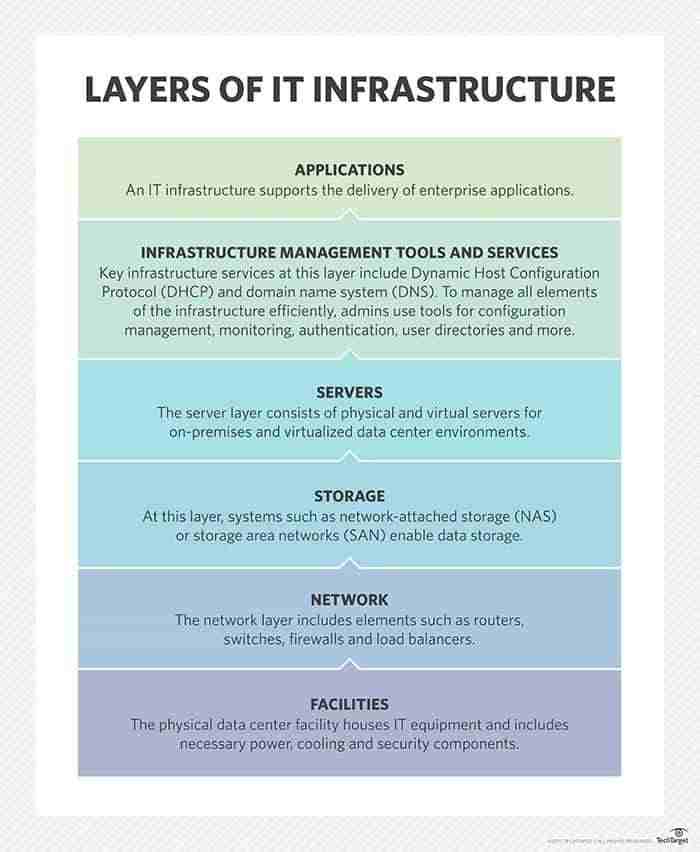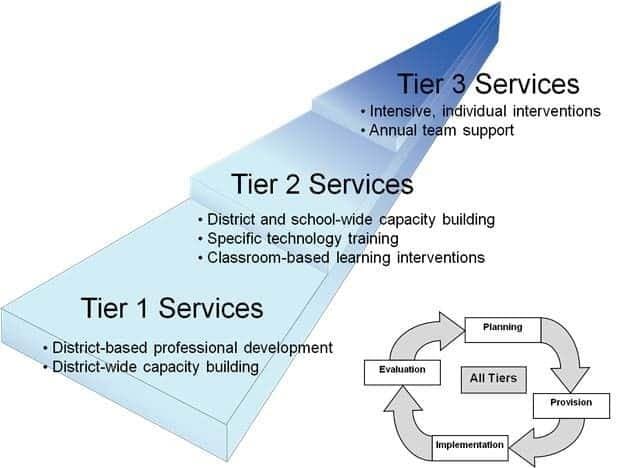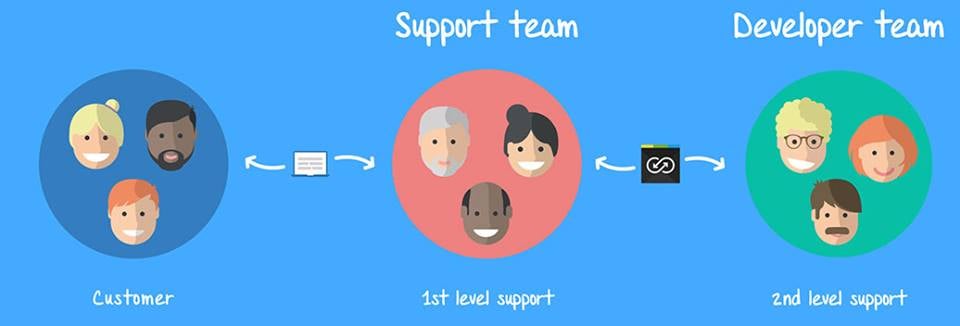IT Support: What are the different levels?
Introduction
Technical support denotes many services. Companies provide support to users by using these services. They provide tech help for products viz. computers, mobile phones, televisions, software.
Perplexing things about IT Tech Support is that people don’t know what is Level 1 or Level 2 or Level 3 support.

Image source: https://www.citrix.com
Technical support is delivered over the telephone, over chat, via email or using specific software. Users can employ these to connect technical support. Technical support executives are familiar with the product for which they provide maintenance.
What is an IT Support
You may hear the term many times but may not have a clue about what it refers to. Probabilities are that you have contacted an IT support but you don't realize it!
We are living in a very advanced world, where such service is mandatory. Technical support is another name for IT support and Tech Support is the method to provide help with technology.
The goal is to provide solutions to consumers when they face a problem with a product that they purchased. Most companies today offer necessary tech support for free.
The good thing about this type of service is that these can be simple or very complex. Many times consumer’s question can be answered very quickly. You will find that the individual helping you, is happy to spend time on the problem. Support executive can help over on the phone or help through email. They will provide you the tech solutions that you need to use the intended product.
Every help desk is different, but you will find the information and support that you need. The different names for IT support might be confusing.
Typical IT support infrastructure
Infrastructure is the base that supports an organization or its systems. Physical and computer-generated resources make a data center. These data centers support the processing and analysis of the data. IT Infra may be distributed or integrated with a data center. It may well distributed across several data centers. These are either organized by the organization or a third party.
Infrastructure components
Data center setup includes the power and building essentials required to support the hardware. The data center hardware structure usually includes storage, servers, networking devices. Some of the e.g. are routers and switches, cabling; and network equipment, such as network firewalls.
A data center needs watchful consideration of IT infra security. IT Security includes physical security that has controlled access to the data center. For example electronic key entry, video, and human surveillance. It ensures only authorized people to have access to the data center hardware space reducing the possibility of data theft or damages.
data_center-it_infrastructure_layers

Image source: searchdatacenter.techtarget.com
What An IT Infrastructure Solution Consists Of?
Even before you think to meet an IT infrastructure solutions providers, you must know about its components. The typical components of an infrastructure are:
- The Hardware. It consists of data centers, servers, switches, hubs, and routers, computers, etc.
- The Software. It consists of CRM, OS, ERP and other applications.
- The Network. It consists of internet, firewall, network component, and security.
Different/ Tiers or levels and Functionality
Technical support is being delivered using many different technologies. For e.g. questions can be answered using SMS, Telecalls, E-mail, Chat, Forums or Fax. Software issues can be resolved over the phone or using remote access. More complicated issues with hardware normally need to be dealt with the person. IT support tier and IT support levels are same.

Image source: https://www.setbc.org
Technical support is divided into levels or tiers, to serve the customer base. The number of levels and organization of tech support group is dependent on business need to serve and their ability. A multi-tiered support system is to deliver the best possible service in an efficient way. The success of the org structure is reliant on:
the technicians' knowledge of their level of responsibility,
customer response time agreements, and
when to escalate an issue to appropriate level.
A support structure orbits around a 3-tiered technical support system.
Level one also as service desk. It takes the preliminary call from users and they will creates ticket. They can do the elementary first fixes too.
Level two is place ticket reaches if it is not resolved by 1st level. Here they have knowledge and good experience of various operating systems and hardware. They are able to suggest technical advice or provide remote support to L1. There are time constraints to help things. If 2nd level is incapable to get it resolved within defined time, it will be sent to 3rd level.
Level three is finally where the ticket is resolved. The techs at L3 will also have experience and knowledge. L3 also have full rights to user hardware and server side.
Server side support begins at level three. A L3 techie looks into basic initial checks and repairs to servers and other infrastructure.
There is also level 4. This team will have PRECISE knowledge over all applications and processes. They are sometimes known as application or development support.
Support methodology and Hand over methods to the next level
Tier I or Level 1, is the first support level accountable for basic issues. It is also known as first-line support, level 1 support, support line 1 and others to denote basic support function. The job of a Tier 1 support is to gather the customer’s data and to determine the issue. This is done by examining the symptoms and finding out the fundamental problem.

Image source: https://qph.ec.quoracdn.net/
Tier II or Level 2, is in-detail technical support level. It costs more as the technicians are experienced and well-informed on a particular product. It is also known as administrative level support, level 2 support and many other titles. These titles signify advanced methodological troubleshooting and investigation methods.
Technicians in this level are accountable for assisting L1 personnel to resolve any technical problem. They examine raised issues by confirming the rationality of the problem. They also look for known solutions related to these complex issues. However, it is vital to a support executive to understand the accomplished tasks by the L1 technician before beginning the troubleshooting progression.
The L2 technician needs to know how long the L1 technician has been occupied with the particular problem of a customer. This is a main component in fulfilling both the business and customer needs. This permits the specialist to rank the troubleshooting tasks and properly manage the allocated time.
Tier III or Level 3, is the uppermost level of support in a technical support model accountable for resolving the most difficult problems. It is also known as back-end support, level 3 support, high-end support and many other titles. The title denotes expert level support for troubleshooting. These technicians are specialists in their areas and are accountable for assisting both L1 and L2 personnel. They are also responsible for research and development of resolutions to unknown issues. L3 specialists have the same duty as Tier II specialists in understanding the work order. They also assess the period already consumed with the customer to prioritize the work. They ensure that time is utilized sufficiently.

Image source: https://sheajackman.files.wordpress.com/
Staffing needs
L1 - Junior level technical executives
Trained to resolve known glitches and service requests by ensuring the steps in scripts.
L2- Support technicians
They have good knowledge of the product. Not necessarily the engineers or computer programmer who designed and developed the product.
L3- The specialists
They are mostly the highly skilled specialists. They include the developers, architects, or engineers who formed the product.
Does a L0 exist?
Tier 0 or self-help exists as FAQs or Wiki which allows users to access the information and resolve issues on their own. Users don’t have to contact a Service Desk or Helpdesk for solution.
Automated and type of self-service resolutions that users may access on their own without the help of the Help Desk. These may include password resets, Websites for requesting support, and knowledge base search.
What after L3?
A fourth level represents an escalation point, while not generally used. Escalation point is outside the organization. Level 4, is generally a software or hardware merchant. Within a enterprise incident management system, it is vital to track incidents when incidents are being taken care by a vendor.
Conclusion
Even though all these are the universal definitions of technical support levels, these are not to be followed as is during troubleshooting. I’ve seen many Level 1 support technicians who are accomplished to perform L2 and L3 work. Many a times L2 and L3 techies take phone calls and do direct fixes. Level 2 can work with IT Infra and create resolutions, while Level 3 techie may switch to the desktop.
Generally, the larger the organization more streamlined these roles are. In a large organization or an outsourcing company in Help Desk, there may be segregation. In these cases the model will look like outlined here. In smaller setup, the roles of techies may incline to be more volatile because not many people are available. These roles may be institutionalized in many ways but normally, this is how Technical Help Desk specialists think of the variances between levels and their tasks.
The front route of support provides basic and common support. For more composite tasks, there are Level 2 support technicians. For highly technology intensive issues, there are Level 3 support techies. Separating assignment based on know-how, skills and availability is not a matter of worry anymore. Our “favorite IT support guy,” is no longer a winner, in given scenario. Those favorite guy, from now on, will reimburse their own coffee.
Explore more ITIL concepts – Register for the Next batch near you
